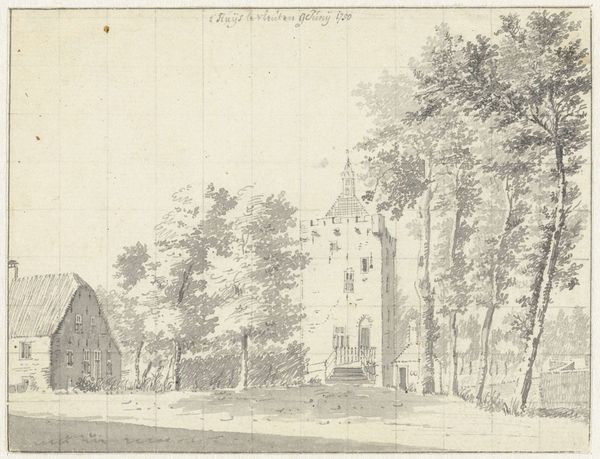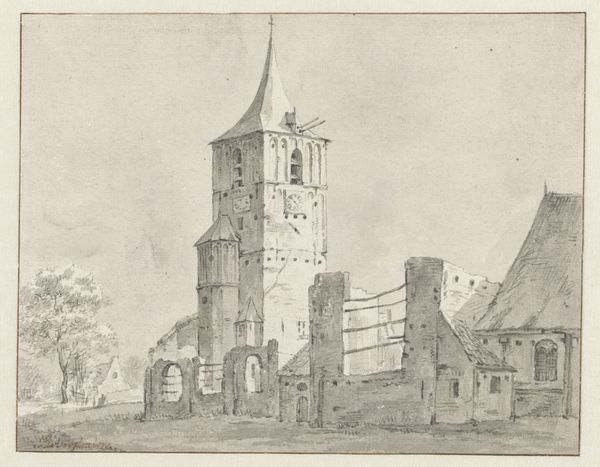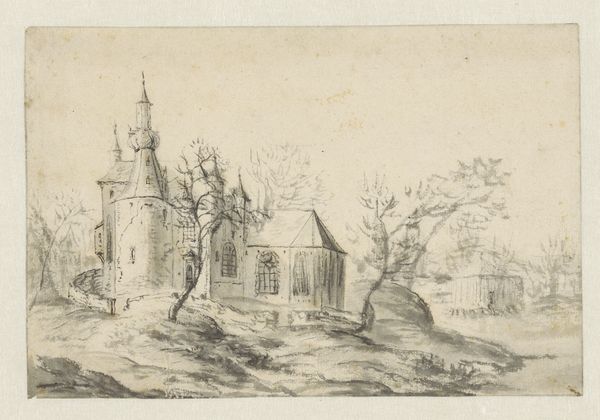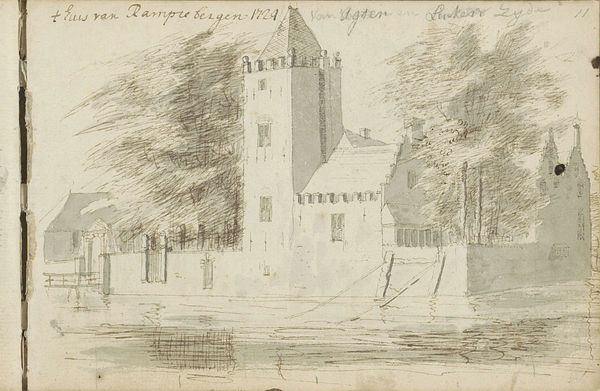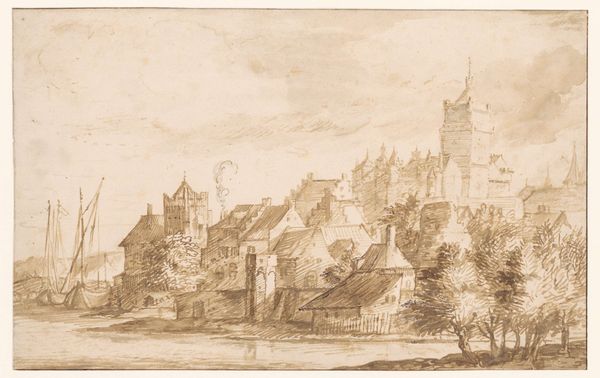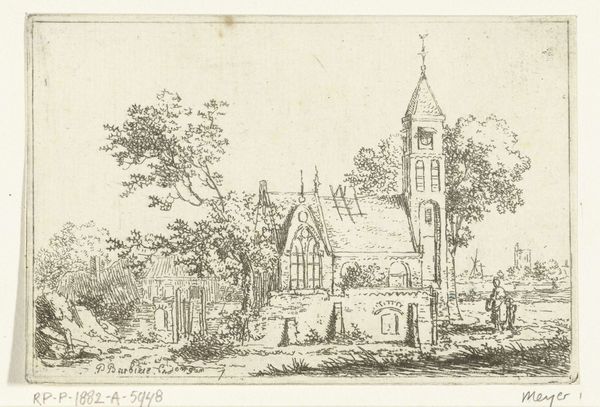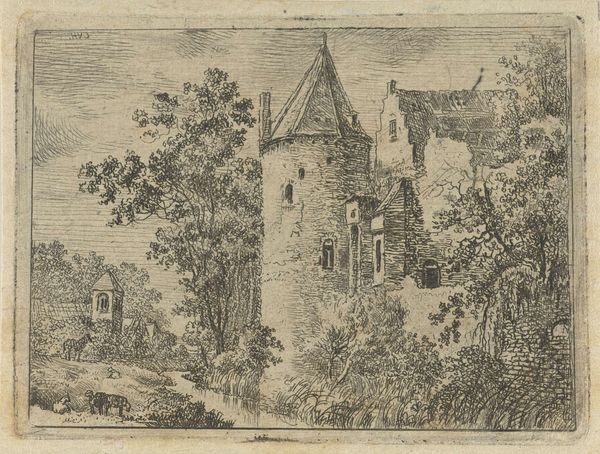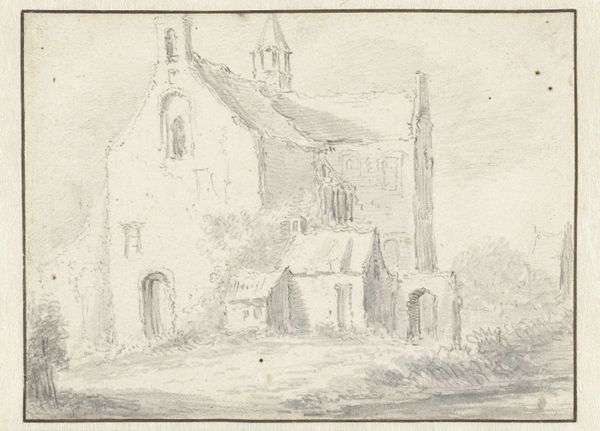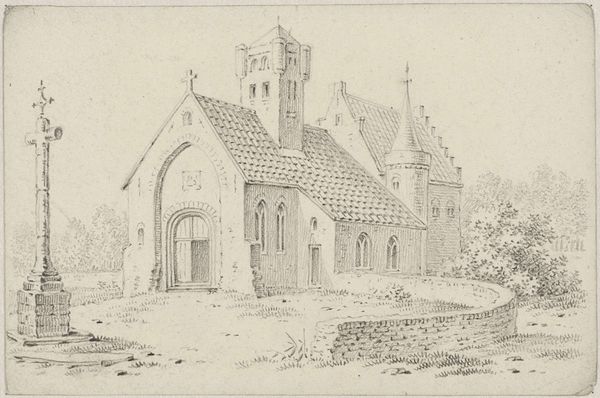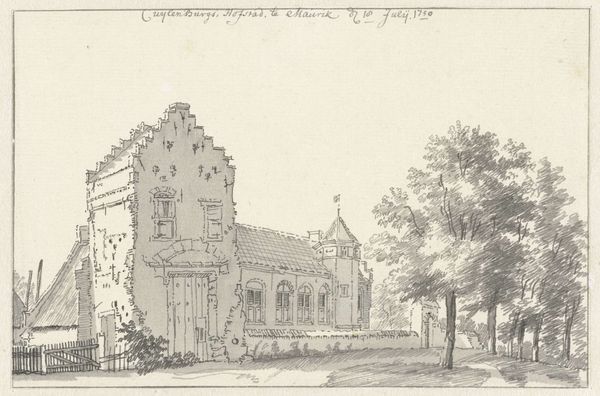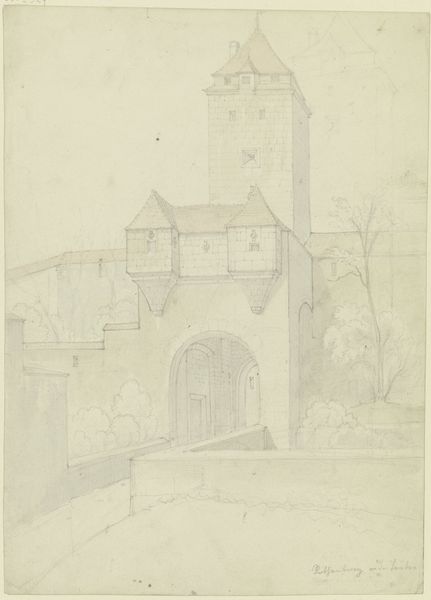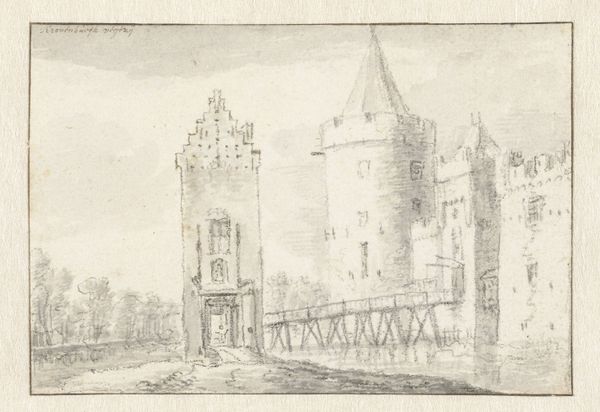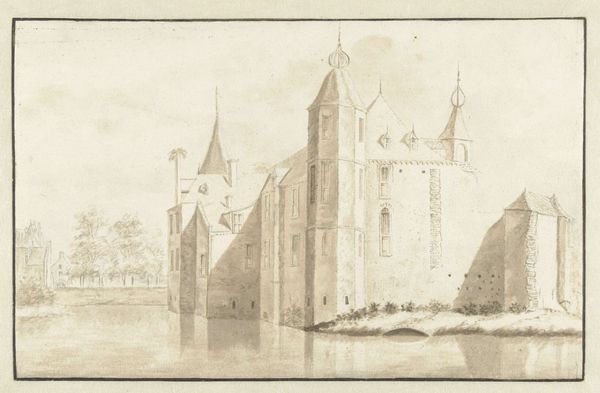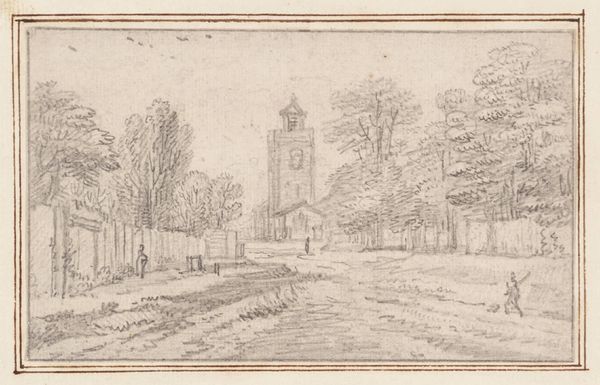
drawing, pencil
#
drawing
#
dutch-golden-age
#
landscape
#
pencil
Dimensions: height 96 mm, width 144 mm
Copyright: Rijks Museum: Open Domain
Editor: This is Jan van Goyen’s "Pelluspoort of Pellekussenpoort te Utrecht," a pencil drawing from the Dutch Golden Age. It's quite delicate, almost ephemeral. I’m struck by the texture he achieves with such simple materials. What stands out to you? Curator: What fascinates me is how a simple pencil can capture the weight and texture of stone and brick. Think about the availability of paper and graphite in the 17th century – both commodities tied to trade and resource extraction. This drawing represents a specific social structure that made this possible. The labor of those who mined the graphite, those who produced the paper, are implicit here. Editor: So, it's not just about the image itself, but the means of its production? Curator: Exactly! Consider also the subject: a gate. Gates controlled access, they taxed goods, they symbolized power. Van Goyen wasn’t just depicting a pretty scene; he was documenting a nexus of social and economic control. Can you see that woven into the mark-making, in the way light plays across the rough surfaces? The image aestheticizes the function and inherent power of the gate. Editor: I see what you mean. It elevates this structure into something significant. Is he commenting on that power, or simply recording it? Curator: That's the beauty of materialist art history: we don't need to assume authorial intent. The very existence of this drawing, its materials, its subject, all speak volumes about Dutch society at the time. It brings forth material production as not simply the backdrop of an artwork, but also the generator of its meaning. Editor: That really changes how I see it! I hadn't considered all the implications behind the materials and subject matter. Thanks, it gives a richer depth of perspective on a relatively quiet and subtle work. Curator: Absolutely! The true power of art lies often not just on the surface, but in understanding the conditions of its making and reception.
Comments
No comments
Be the first to comment and join the conversation on the ultimate creative platform.
